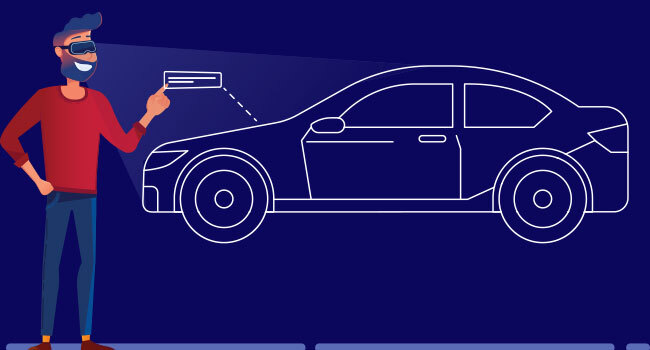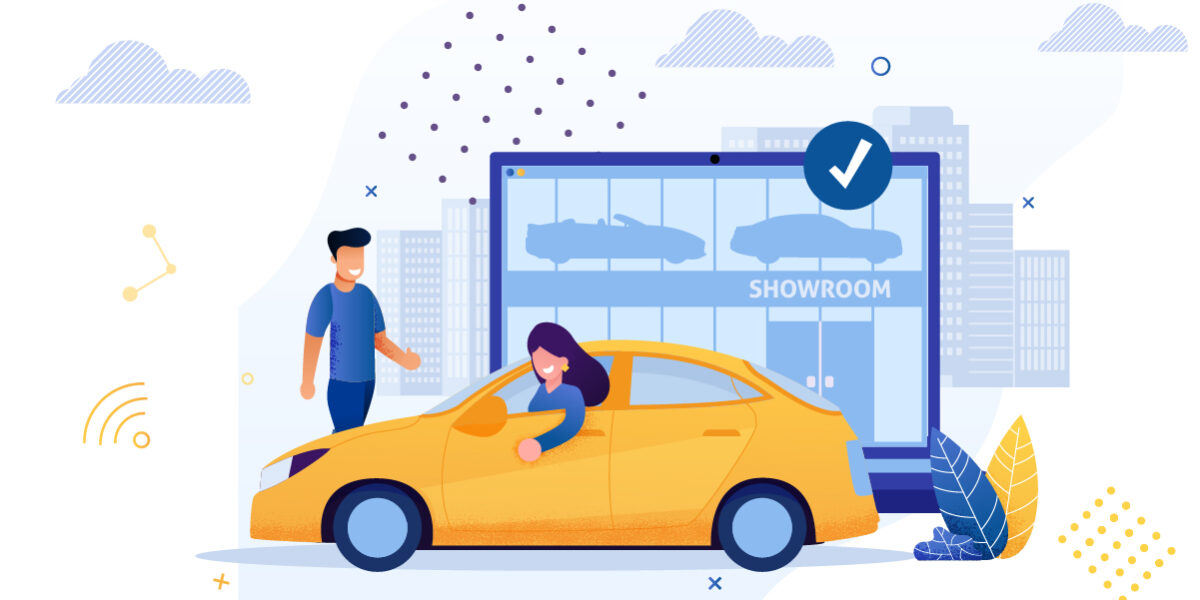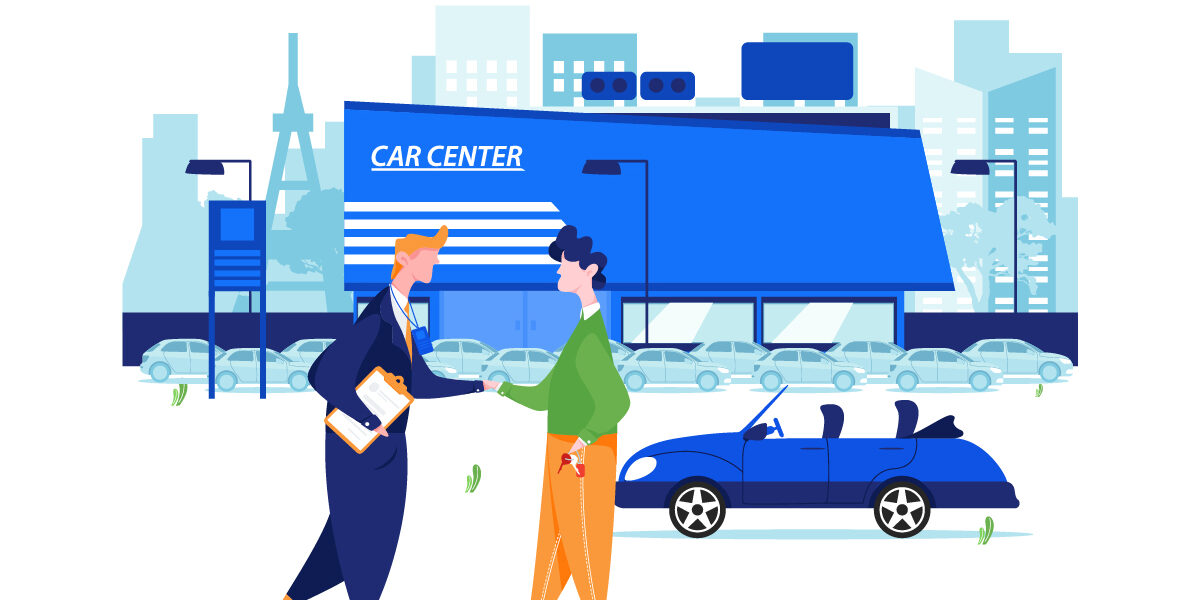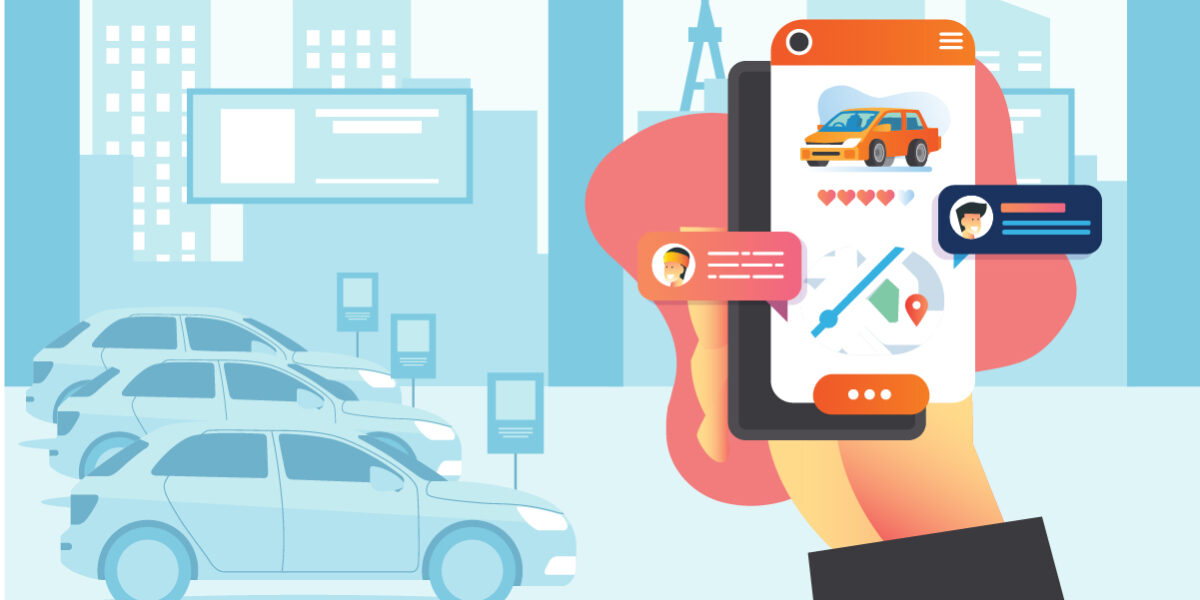Virtual Reality (VR) made its first big appearance in the 1990s. There were great expectations from this breakthrough at the time and tech leaders assumed that it would revolutionize the way we work, live and play. Despite these high expectations the first round of commercial grade VR devices fell short of the mark and failed to leave a lasting impression.
In 2011 the very first Oculus Rift was unveiled setting the benchmark for future VR devices and technology to come. Advancements in computing power, sensors and graphic resolutions now meant that VR could deliver fascinating experiences – rekindling both interest and investment in this disruptive technology.
Less than a decade later VR has extended its reach into a number of applications in gaming as well as engineering. When it comes to the automobile industry its most promising application may lie in sales. By using VR, car shoppers can explore various models, in different colours and multiple trims from the comfort of their own home.
Automobile Retail is Making the Shift to Online Sales
Typically, people enjoy owning a new car but express a dislike towards the process it takes to get there. 87% of Americans dislike one aspect or another with regards to making an automobile purchase at a traditional dealership. Most of the time these poor levels of satisfaction stem from a limited number of models, tedious interactions with the finance departments and the overall lengthy timeframe it takes to walk out of the dealership with a brand-new car.
Such factors are contributing to car shoppers only visiting a maximum of two automobile dealerships. As opposed to viewing cars first hand in the dealership, most customers complete a lot of their car purchase related decisions online and would be happier if a few of the preliminary steps to purchase could be completed in advance. VR presents itself as a promising opportunity when you take customer feedback into account.
Enhancing Automobile Buying User Experiences
VR is a completely immersive experience that requires a headset placed over the person’s eyes and ears to draw a curtain over reality in favour of a virtual environment. Car buyers can now browse a variety of models through VR in a selection of colours. They can also virtually walk around the car to examine the exteriors up close and also feel what it’s like to sit in the driver seat. In some ways this experience recreates what it’s like to be in the showroom. It also adds to the experience by allowing customers to interact with vehicles that might not be physically present in the showroom.
VR is becoming increasingly prevalent with each passing day. However, it hasn’t reached a stage where every car dealership has a VR headset. But that’s something that most dealers are working towards. In the meantime Augmented Reality (AR) can also step into the picture to help create a live demonstration of what it’s like to experience a certain vehicle. The primary difference with AR and VR is that the former overlays certain elements onto reality itself. With the help of a phone or tablet customers can see what it’s like to fit the car into their garage, view it in a range of true-to-life colours and compare an unsold vehicle to those in the showroom. So, it isn’t as fully immersive as VR yet it is good enough to get the job done when it comes to virtually experiencing a car.
Benefits of VR in Car Shopping
The primary benefit with AR or VR in car shopping is that it allows customers to experience the automobile options from any location. Car shoppers can view and appraise the various models that the dealership has made available online. This allows them to bypass the extended periods of time that it would otherwise take to purchase a vehicle.
- Reducing customer time on the lot. The level of customer satisfaction will continue to drop with the amount of time they are required to spend on the lot. Giving them a VR experience at home can minimize that time spent on-premise and therefore lead to improved customer experiences.
- Reducing inventory overhead and transportation costs. With the increase in VR showrooms dealers will no longer face the burden of keeping a fully stocked inventory. Alternatively, vehicles can be delivered to the showroom only as and when the customer has decided to make a purchase post the VR experience.
- Expanding the dealership’s consumer base. VR has the added benefit of reaching out to consumers who lie outside of their geographical reach. This means an extended client base for dealers to capitalize on. This increase sales and also allows for the faster movement of inventory.
- Giving customers what they want. Studies suggest that the experience of a car shopper at the dealership has been well below satisfactory. By giving them a VR shopping experience, a dealership can quickly convert from a source of dissatisfaction to a preferred outlet for purchasing vehicles.
When functioning in a highly competitive industry such as automobile sales it is imperative to take new digital innovations into account. There are several technological drivers necessary in order to facilitate a flexible maneuver such as this and SalesCatcher’s Intelligent Offering (iO) can help. Our AI orchestration platform – iOFlow, working in tandem with our intelligent RPA tool – iOBot can create a highly customized experience for each of your consumers. If you’d like to find out more our AI team at SalesCatcher would be happy to help.




